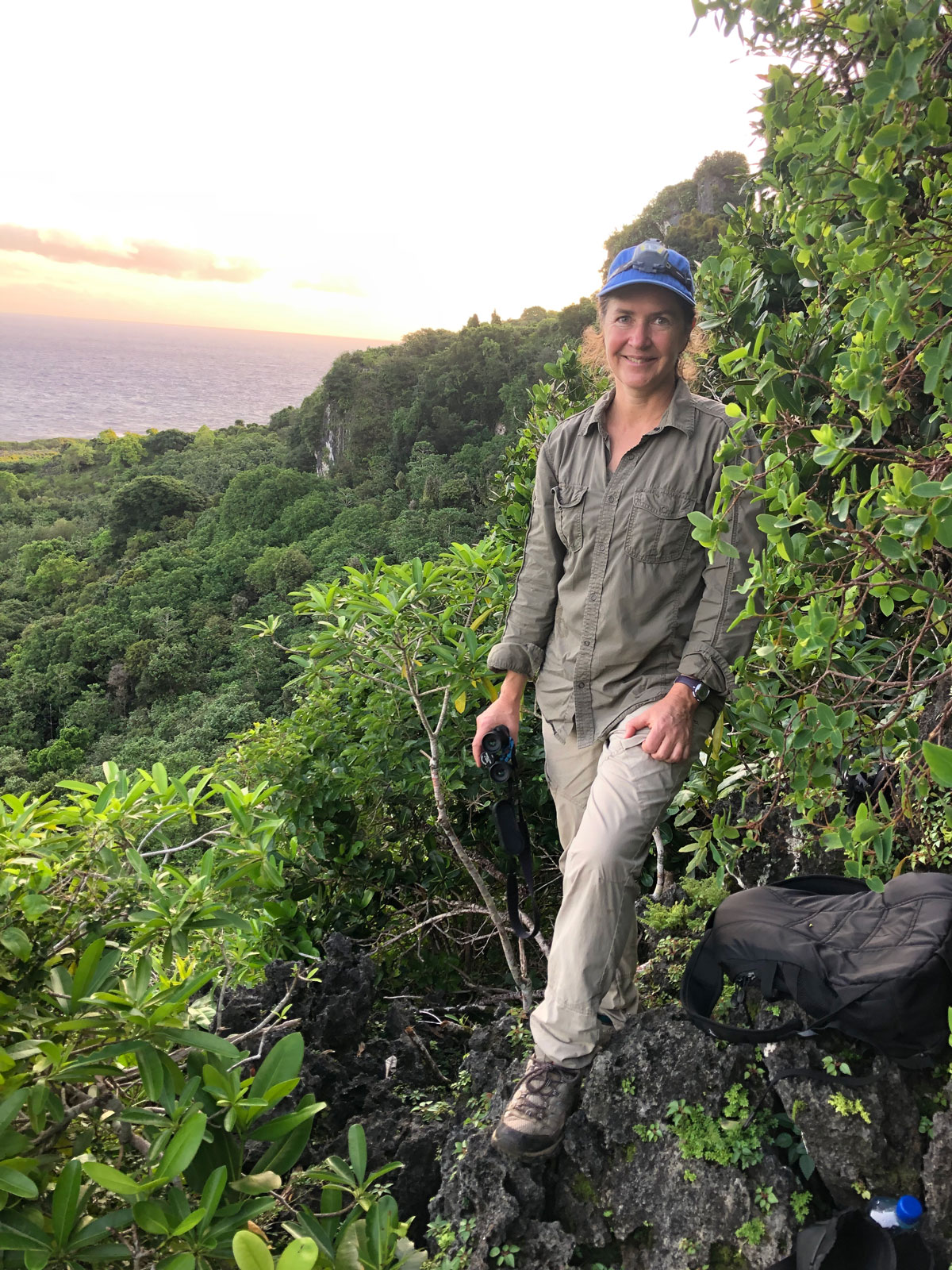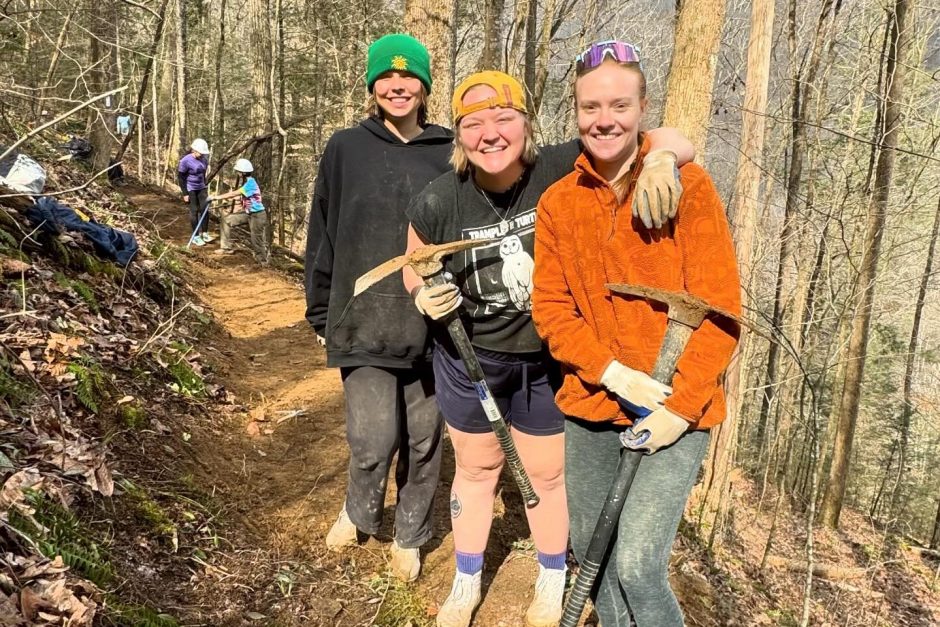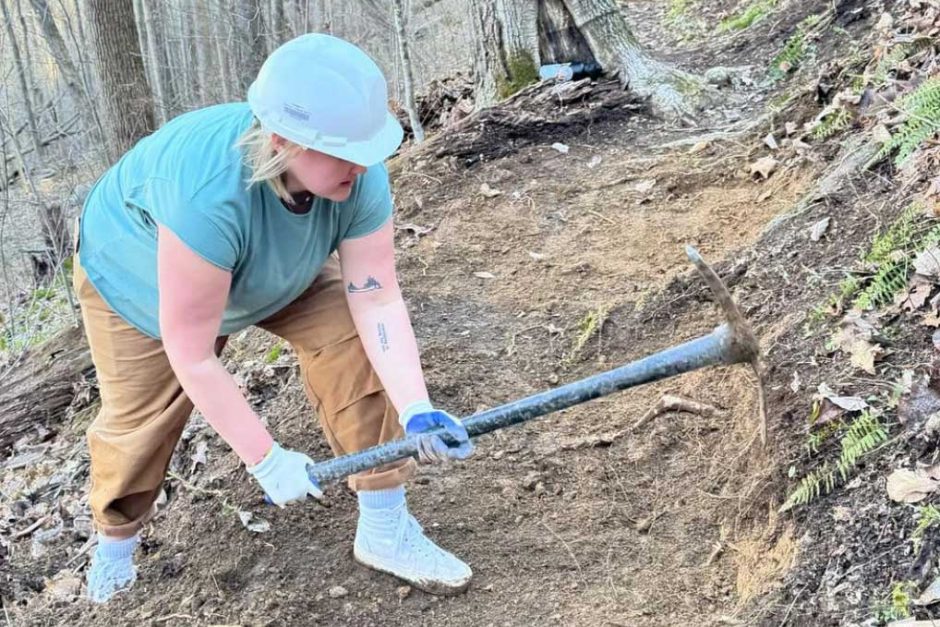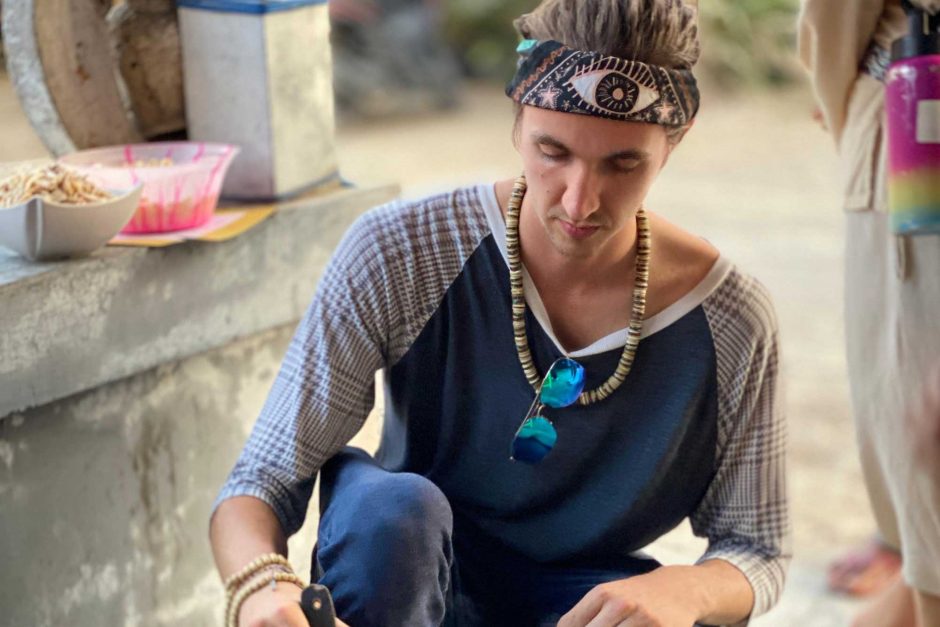The wildlife conservationist: Associate Professor of Biology Tammy Mildenstein
Tammy Mildenstein started her career in electrical engineering but soon realized her interests were in another STEM field: wildlife conservation. She made this discovery while in the Peace Corps at a former U.S. naval base on the main island in the Philippines.
Bats and butterflies

Her Ph.D. focus became the conservation of globally endangered fruit-eating flying foxes, which are really large bats that look like little dogs. The question she posed centered around two endangered species of fruit bats. One species was numerous and one was not, but both were treated the same so was one benefiting more, and why? One species is endemic to the Philippines (the specialist species that ate only from a select group of fruits) and one was found throughout Southeast Asia and would eat any fruit. She wondered if by treating both bats the same in terms of conservation efforts, the more numerous and widespread fruit bat was preventing the specialist species from thriving. Her controversial recommendation—let the locals eat the bat that outnumbers the rarer specialist species.
She continues to study bats in Guam and the Mariana Islands with her students.
After coming to Cornell College, she wanted a species she could study in Iowa. Her interest was piqued by the Monarch butterfly, on which she has conducted summer research with Cornell students the past seven years. Cornell students study the essential habitat of the caterpillar of the Monarch, the milkweed, which is the only food source for a Monarch caterpillar. How much prairie (with milkweed) do we need to stabilize the Monarch population?
Surprising results
Sometimes, Mildenstein notes, we uncover through our experiments unexpected observations. One of her students found that mowing a prairie helped milkweed flourish whereas the other prairie plants took longer to grow back, which triggered a boom in monarch egg production.
While living and working in San Francisco for Motorola as an electrical engineer, Mildenstein spent time outdoors with others interested in conservation.
“I just got really interested in the science behind conservation, and how sometimes what our initial responses are, isn’t what’s best for conservation of the species. If you haven’t done research on the ecology of the species, you may not be doing the right thing. And just because you want to hug everything doesn’t mean everything wants to be hugged.”
Native Iowan returns
Mildenstein grew up in Iowa, and she returned to Iowa in part due to a chance encounter with Dale Carhill ’85 on a boat near the Mariana Islands, where she was counting the bat population. She originally had not planned to do her counting from a boat, but a rocky flight on a helicopter the day before prompted her to seek an alternate mode of transportation for her bat counting expedition. Serendipity?
“The guy told me how Cornell had changed his life; he was glowing. It was the most powerful experience of his life and it’s how he met his wife. It was the first time I realized how small schools can play such a huge role in a person’s life. That put Cornell on my radar,” she said.
And despite being told how unlikely it would be for someone in biology at Cornell to step down to open up a spot for her, it happened, and she’s been teaching and researching at Cornell since 2014.
“I love that the students care,” Mildenstein says. “I love that they ask questions. I love that every day after class, they all say thank you. It makes me want to cry. I’m still in touch with former students from my very first year. I love how much I learn from students and how much passion they bring into the classroom.”
Read about the other faculty in this series:
The anthropologist: Associate Professor of Anthropology Misha Quill
The organic chemist: Associate Professor of Chemistry Jai Shanata ’05
The neuroscientist: Associate Professor of Psychology and Behavioral Neuroscience Steven Neese
The physical therapist: Associate Professor of Kinesiology Kristi Meyer ’01



